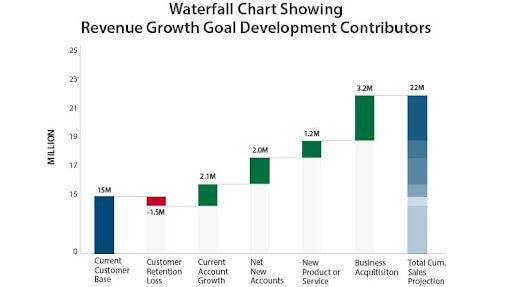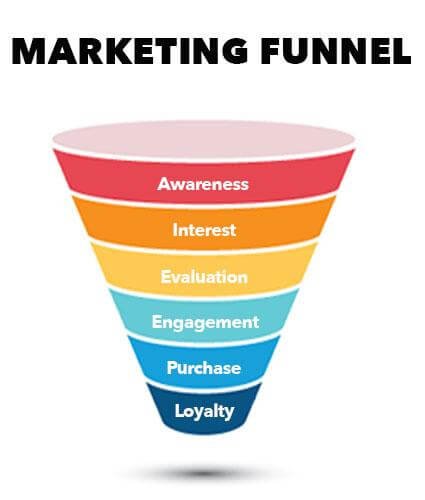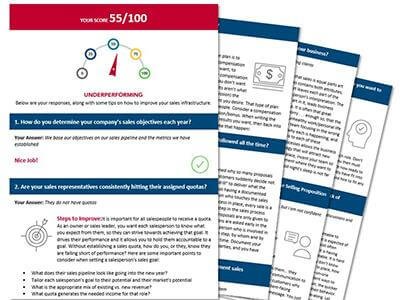It’s that time of the year. Sales leaders are with their salespeople in the trenches driving hard to finish a strong Q4 and executives are looking forward as they establish their 2023 annual revenue goal.
I observe owners and executives in my small and mid-sized business target market falling into two different groups as they review how their current year has played out. While Q4 is still active, predicting an outcome is practical by considering current sales pipeline volume and deal positioning.
The group that is on-track to meet their revenue target took a logic-driven approach to developing their goal. This resulted in their sales leaders being equipped to develop cohesive sales plans that accounted for the various revenue goal segments. The key to this success is that these sales leaders were also effective at implementing and executing their plans.

The other group took a top-down approach to establishing their revenue goals based on what they thought was possible.
These growth trajectories are seldom achieved and cause great frustration within your team.
Bottom line… a top-down approach to setting revenue goals doesn’t work. If you are heading into 2023 using this approach, you are setting yourself and your sales team up for failure.
Now is the time to slow down to take a more strategic approach that will give your company a realistic revenue target built on more than the hopes of leadership.
In this article I share knowledge I’ve built-up over decades with the objective to help you build a revenue target that you can believe in. Once you’ve developed a logic-driven revenue projection, you’ll have the foresight to align your business to achieve the expected result. Let’s get started.
Bottom-Up Approach to Revenue Goal
I have rescued too many doomed sales pipelines that were chasing after a revenue goal that they simply were never going to hit.
Some revenue targets that come to mind are ‘50% growth’ or ‘doubling sales from last year’ without anything changing to make it possible like additional sales staff, new product offerings, a solid marketing plan, or some sort of acquisition to accelerate growth.
Don’t do that!
When taking a bottom-up approach, you’re not starting with your desired revenue target, you’re ending with a number that can be strategically achieved through effective planning and execution.
Step 1: Calculate Base Revenue
Your first step is to define “base revenue”. Base revenue comes your current customer base and the work you already contracted. Whether your business model has a recurring revenue stream or not, a business can look at its historic trends to determine what their current customers are likely to produce.
As shown on the Waterfall Chart below, this figure is made up of the first two contributors:
- Current Customer Base ($15M)
- Customer Retention Loss (-1.5M)
Don’t miss accounting for retention loss. For some companies this is a small impact, but for others the nature of their Customer Life Cycle can result in a notable loss that cannot be avoided. In either case, it’s important to recognize the net effect of what is reasonable to expect from your base revenue.

Step 2: Current Customer Organic Growth
Next, it’s time to isolate what is expected out of your current accounts in terms of organic growth. This is in addition to base revenue anticipated year-over-year.
As shown on the Waterfall Chart above, this figure is represented as the third contributor:
- Current Account Growth ($2.1M)
While I refer to this growth contributor as organic, it requires strategic planning, implementation, and execution to bring into reality. Expanding growth from existing customers tends to be low hanging fruit in most organizations.
I routinely find untapped opportunity in this segment due to lack of sales focus on how to expand wallet share through strategic account planning, quarterly business reviews (QBRs), etc. The real missing link is often the absence of effective sales leadership focus.
In the small and mid-sized business sectors, this is commonly due to the owner or top executive being the resource that owns sales leadership and them being spread too thin. These needs are the basis for why I transitioned my VP Sales career into a Fractional VP Sales practice. I can help you fill these gaps that have the big ROI impact!
Step 3: New Logo Growth
Now comes the layering of New Logo or Net New growth. As shown on the Waterfall Chart above, this figure is represented as the fourth contributor:
- Net New Accounts ($2M)
One of the first things you must consider is the history and current state of your market.
You can’t expect to land twice as many accounts if they don’t exist. Just like you can’t expect your industry to heat up and out-pace the rest of the economy.

If you already have an established Marketing Funnel methodology running that has proven its ability to generate steady lead flow, your Net New calculation tends to be easy to derive.
If you don’t, it is imperative that you develop a cohesive partnership between your sales and marketing functions to generate effective lead generation results that can feed your sales pipeline. You’ll find helpful guidance on how to approach that development process by accessing my previous blog entitled, How Do I Engage Sales in Lead Generation?
Step 4: Strategic Growth Initiatives
The last growth factor is supplemental Strategic Growth Initiatives. These serve as the stopgap between what executives are resolved to achieve for their growth trajectory and what is reasonable to expect from their sales and marketing teams.
As shown on the Waterfall Chart above, these are the last two contributors:
- New Product or Service ($1.2M)
- Business Acquisition ($3.2M)
Take some time to think about your own product or service offering or any new products you are launching. Are you adding anything new? How do you stack up against competition?
Other tactics may be strategies you deploy that impact pricing or deal size by asking yourself a series of questions such as… Do you need to raise or lower prices? Do you plan on adding a new offer that you anticipate will increase the amount you expect to sell? What are your competitors doing to take market share?
When all the above strategies are exhausted, that’s when an acquisition may need to be considered. Digging into this topic calls for an entire article on its own, so I’ll leave it at that.
A Revenue Goal You Can Trust
Remember, Bottom-up and not Top-down when establishing your new fiscal year revenue goals. Even though it takes some time and hard work to arrive at a logic-driven number, it pays dividends! Business leaders have renewed confidence, your teams are on solid footing to create proactive plans, and everyone is rowing in the same direction. This momentum is critical in positioning your company for success in the new year.
If you are finding yourself questioning the strength of your sales pipeline and wondering why projections seldom line up with your actual revenue, please feel welcome to reach out. You can contact me through any of these methods: call me at (571) 329-4343, or email me at Chris@Salesgrowthadvisor.com , or book a call through my Scheduling Tool.

Another helpful resource I offer is a custom report you will receive after investing 2-minutes taking my SALES AGILITY ASSESSMENT
It’s filled with tips on how to optimize your sales environment based on your unique responses, making the report individualized and insightful!
——————————————————————————————————————————
I am part of a national group of Senior Sales Leaders who collaborate to share insights like the examples shown in this article. We formed because of our shared passion to help business leaders exponentially grow their revenue.
Chris Tully
President | Sales Growth Advisors LLC

(Phone) 571-329-4343
(Email) crtully@salesgrowthadvisor.com
(Schedule) Here is my calendar link!







Leave A Comment